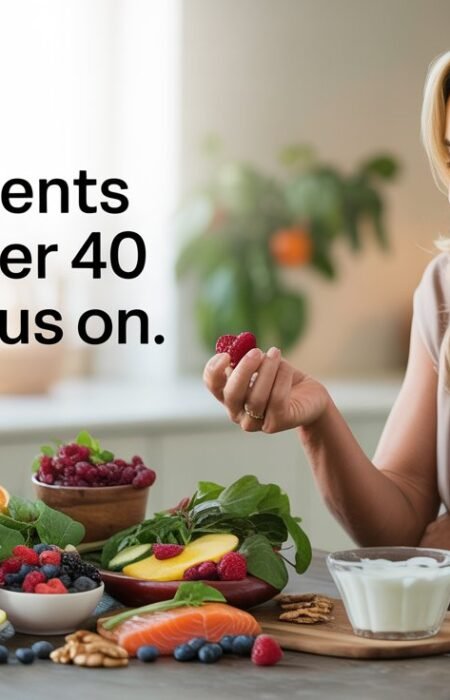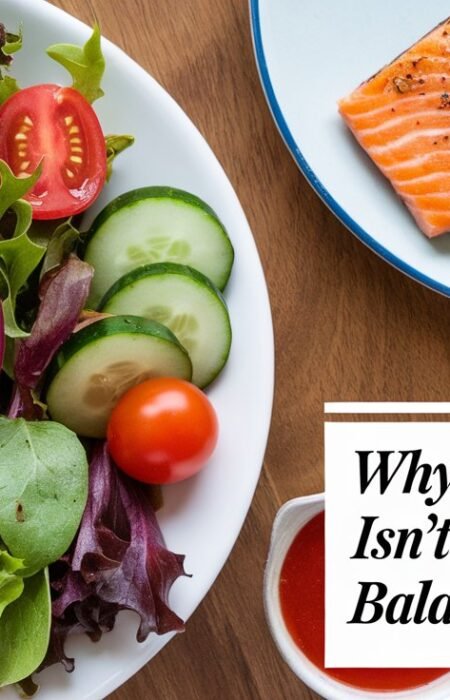How to Stop All-or-Nothing Thinking Around Your Wellness Journey
The Scenario Feels Familiar: You commit to a rigorous new diet. For three days, you’re flawless—green smoothies, precise macros, no sugar. Then, a stressful Thursday hits, and you grab a cookie. Instantly, the inner critic roars: “You blew it! The whole week is ruined. You have no willpower. Just give up and start again Monday.” The salad lunch feels pointless, the gym bag stays in the car, and the wellness plan lies abandoned. This is the tyranny of all-or-nothing thinking, and it’s the silent saboteur of sustainable health.
Also known as black-and-white or dichotomous thinking, this cognitive distortion forces experiences into extreme, mutually exclusive categories: perfect success or abject failure, flawless adherence or utter worthlessness, total control or chaotic surrender. Rooted in our brain’s craving for certainty and often amplified by perfectionism, diet culture, and past conditioning, this mindset transforms minor stumbles into catastrophic proof of inadequacy. The devastating cost? Abandoned goals, eroded self-trust, chronic shame, and a wellness journey defined by exhausting cycles of intense effort followed by crushing burnout.
Why Your Brain Clings to Extremes (And Why Wellness Suffers)
All-or-nothing thinking isn’t just pessimism; it’s a cognitive distortion – a faulty mental shortcut. Our brains, seeking efficiency and predictability, often default to absolutes (“always,” “never,” “perfect,” “failure”) to simplify complex realities. Biologically, this provides a false sense of control in an ambiguous world. However, in the nuanced realm of wellness – where progress is rarely linear, bodies are unique, and life is inherently messy – this rigidity is disastrous:
- The Perfection Trap: Believing a workout “doesn’t count” unless it’s an hour-long sweat fest leads to skipping movement entirely on busy days. This ignores the profound benefits of a 10-minute walk or stretching session (the “Something > Nothing Hierarchy”).
- The Moralization of Food: Labeling foods as purely “good” or “bad” creates a cycle of restrictive guilt (“I ate a cookie = I am bad”) often followed by rebellious bingeing (“I’ve already failed, might as well eat the whole box”).
- Paralysis by Analysis: Fearing you can’t start a meditation practice “perfectly” (30 minutes daily, serene focus) prevents you from trying 5 minutes of breathing, creating a self-fulfilling prophecy of failure.
- Erosion of Resilience: Viewing a missed gym session or a takeout meal as proof of inherent failure destroys motivation and makes recommitting feel overwhelmingly futile.
The Result: Instead of sustainable, adaptable habits rooted in self-care, wellness becomes a punishing cycle of unrealistic expectations, perceived failure, guilt, and abandonment – only to restart with equally unsustainable fervor later.

Rewiring the Binary: Practical Strategies for Sustainable Progress
Breaking free from all-or-nothing thinking requires conscious cognitive retraining. It’s about building mental flexibility and self-compassion. Here’s your evidence-based toolkit:
- Become a Thought Detective & Master Reframer (Cognitive Restructuring):
- Identify the Extremes: Catch yourself using words like “always,” “never,” “perfect,” “disaster,” “ruined,” “totally.” (“I always mess up by Friday,” “That slice of pizza ruined my whole diet”).
- Challenge the Evidence: Ask: “Is this absolutely true? Where’s the proof? Is there any evidence against this thought?” (Did you really eat perfectly all week except that slice? Did one slice negate all the nutrients from your other meals?).
- Generate Nuanced Alternatives: Actively seek the gray area. Replace “I ruined my diet” with “I enjoyed a slice of pizza and I can make a nourishing choice at my next meal. One choice doesn’t define my entire journey”. Use “AND” statements to hold complexity. Example: “I didn’t get to the gym today AND I can take a walk after dinner. Both things can be true.”
- Embrace the “Something > Nothing” Hierarchy & Progress Spectrum: Ditch the pass/fail mentality.
- Define your wellness actions on a spectrum from “Ideal” to “Bare Minimum.” For movement, this might range from “60-minute strength session” to “5-minute stretch.” For nutrition: “Home-cooked balanced meal” to “Protein bar + fruit.” Choosing anything on this spectrum, especially the “Bare Minimum” when energy or time is low, is a VICTORY. It maintains momentum and reinforces that effort exists on a continuum, not a binary. Visualize your progress as a “Progress Spectrum” where even small efforts shift you forward, not an “On/Off” switch.
- Focus on Consistency, Not Perfection: Celebrate showing up at all on low-motivation days. Did you get outside for 10 minutes? Victory. Did you add veggies to one meal? Progress. These micro-wins build resilience and habit loops far more effectively than sporadic perfection.
- Set Attainable, Process-Oriented Goals: Unrealistic goals (“Lose 20 lbs in a month,” “Never eat sugar again”) are setup for perceived failure.
- Focus on Behaviors, Not Just Outcomes: Instead of “Lose 10 pounds,” try “Cook at home 4 nights this week” or “Walk for 20 minutes, 3 days this week.” These are actions within your direct control.
- Start Small & Build: Aim for a 5-minute meditation, not 30. Target adding one serving of vegetables daily, not overhauling your entire diet overnight. Small successes build confidence and prove progress is possible without perfection.
- Build in Flexibility: Plan for “Flex Days” or meals where intuition guides choices without rigid rules, preventing the “blowout” effect when perfection feels impossible.
- Cultivate Radical Self-Compassion: Harsh self-judgment fuels the all-or-nothing cycle. Treat yourself with the kindness you’d offer a struggling friend.
- Acknowledge the Setback Without Catastrophe: “Okay, that didn’t go as planned. That’s disappointing, and it’s human. It doesn’t mean I’m a failure.”
- Normalize Imperfection: Remind yourself that setbacks, cravings, tired days, and life interruptions are universal human experiences, not personal moral failings. Research consistently shows self-compassion is a powerful antidote to shame and a key predictor of long-term behavior change.
- Separate Action from Identity: Eating a food you intended to avoid doesn’t make you “bad.” Skipping a workout doesn’t make you “lazy.” Your actions are specific choices, not your entire being.
- Shift Your Metrics: Track Beyond the Extreme: Move away from binary success/failure markers.
- Non-Scale/Non-Perfection Wins: Track energy levels, improved sleep quality, reduced stress, clothing feeling more comfortable, making it up a flight of stairs easier, successfully navigating a stressful event without emotional eating, or simply feeling more at peace with food choices. These are profound indicators of wellness often ignored by the all-or-nothing mind.
- Focus on How You Feel: Did that walk improve your mood? Did eating regularly help your focus? Tuning into internal cues provides valuable feedback beyond rigid external rules.
The Liberation of the Gray Area
Escaping all-or-nothing thinking isn’t about lowering standards; it’s about raising your capacity for sustainable, compassionate self-care. It’s recognizing that wellness isn’t a destination reached via perfect adherence, but a dynamic, lifelong journey navigated through flexibility, self-trust, and resilience. When you trade the exhausting pendulum swing between “perfect” and “quit” for the steady path of “progress over perfection,” you build true well-being from the inside out. You learn to trust yourself not because you never slip, but because you know, with deep self-compassion, how to get back up, adjust your course, and keep moving forward – one imperfect, human step at a time. The gray area isn’t a compromise; it’s where authentic, lasting wellness thrives. Start today by noticing one absolute thought, challenging its rigidity, and choosing a kinder, more nuanced path. Your journey – and your sanity – will thank you.









